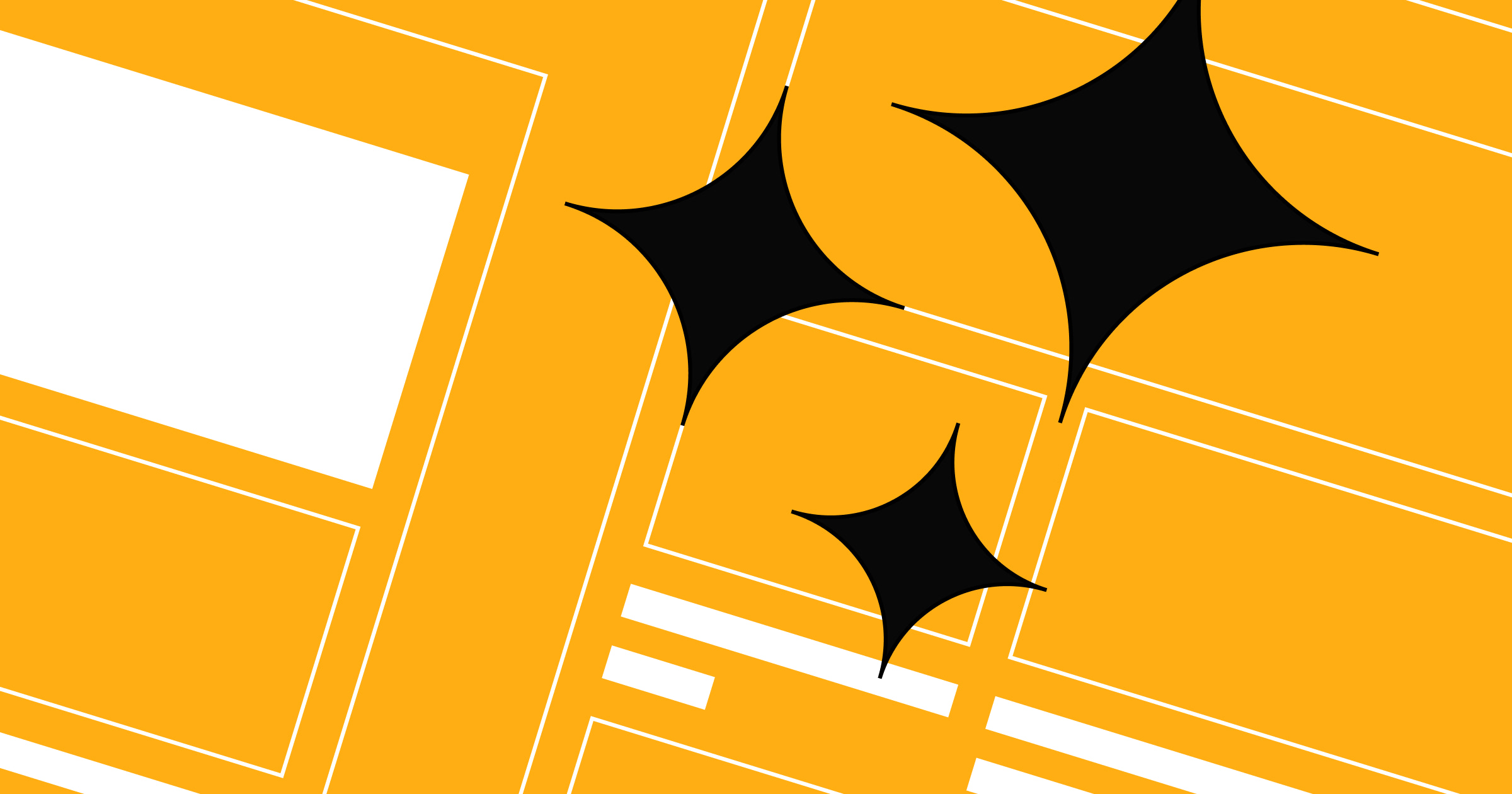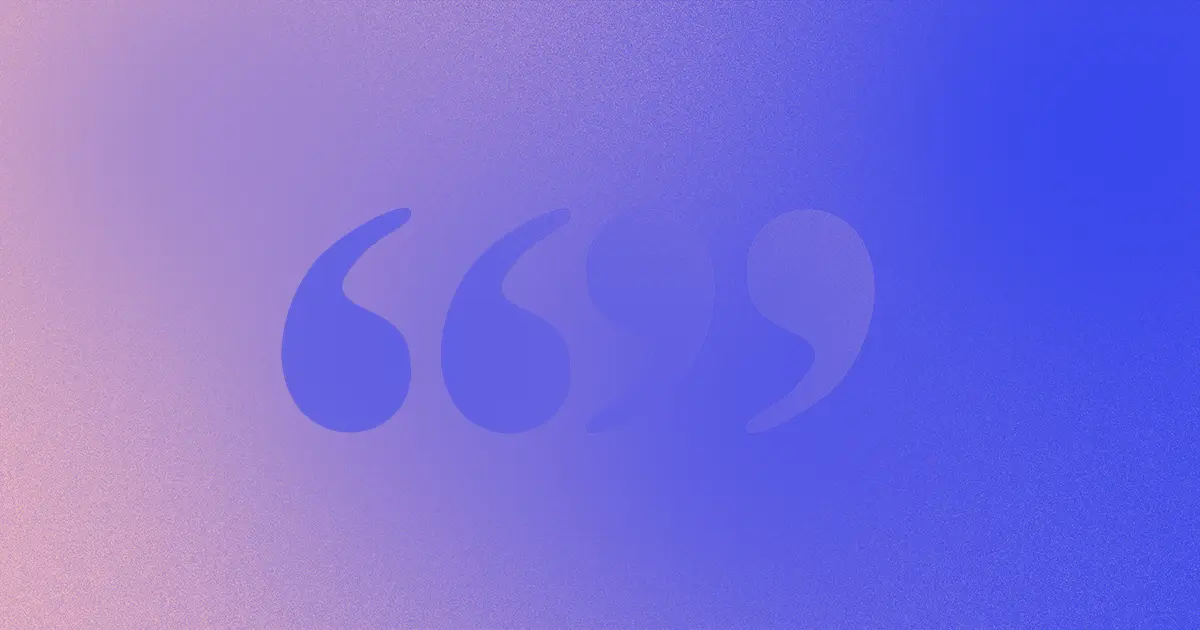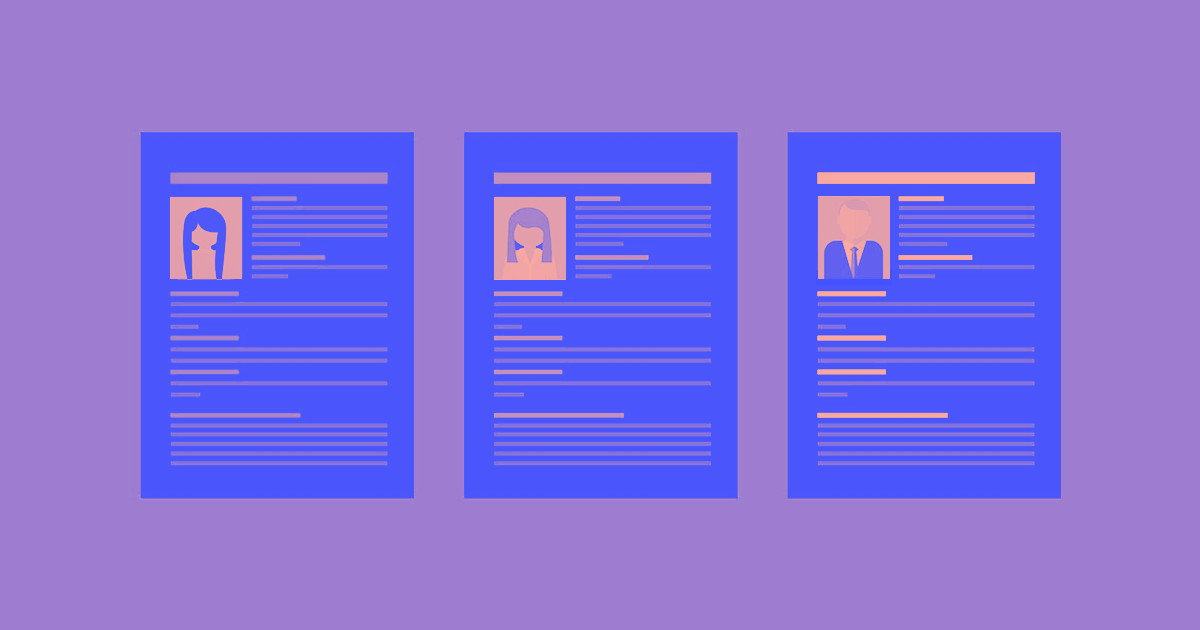Creative droughts are a universal part of the design process, and encountering these challenges means it’s time to find innovative ways to overcome them.
Although you create your final designs digitally, inspiration for designers isn’t limited to what you find through a screen. You can draw inspiration from introspection, social interactions, surroundings, music, nature, and architecture. By observing and engaging with the world around you, you can kindle your creativity.
How to get inspired
Inspiration can strike suddenly, so for a strong start, designers must thoroughly learn about the problem they need to solve. It’s like building a fire — ample kindling ensures a robust blaze rather than a quick fizzle.
For web designers, the preparation stage of the design process might involve client inquiry, gaining familiarity with the industry and the product, and conducting user research. These steps lay a solid foundation for the creative design choices to emerge later.
Once you’ve laid the groundwork, the search for creativity starts. Here, patience and experimentation reign. Fostering a relaxed, open mental state encourages fresh perspectives and helps you form new connections between ideas. You can try journaling, browsing other designers’ work, crafting an inspiration board, or simply taking a break to rest and reconnect. Maintaining this state long enough invites the transformative magic of inspiration that elevates a design from the ordinary to the extraordinary.
Here are 10 of our favorite techniques for encouraging this process and being open to whatever sources of inspiration come your way.
10 valuable sources of inspiration for designers
Every designer is different, and there’s no right or wrong way to seek creative inspiration. However, shaking things up often proves beneficial when you encounter creative obstacles. Here are 10 of our favorite ways to conjure ingenuity.
1. Try free association

Ideas often spring from the creative’s mind — it’s just a matter of discovering them. When working with a brand, for example, starting with the brand name, product or service, and logo design can serve as a springboard for creative exploration. Devoting a 10-minute brainstorming session to record your associated thoughts, feelings, colors, words, mental images, and shapes when contemplating a brand can yield many ideas.
Viacheslav Varov’s website design for the mānuka honey brand Natures Buzz is a prime example of associations in action. Viacheslav incorporates a honey-inspired golden gradient throughout the site and features a honey dipper in the hero image. This honey dipper aligns with the B in the brand’s logo and resembles the stripes on a bee, intertwining the product with the brand identity seamlessly.
2. Explore a new design style

Exploring novel design styles uncovers strategies or techniques that you can apply to ongoing projects. A retrospective journey through renowned graphic design styles, for example, or an appreciation of famous graphic designers’ work offer a rich perspective on how other creatives manipulate design principles to create new and intriguing designs.
3. Get moving
Walking boosts creativity, and many writers throughout history have embraced this practice. Even for non-walkers, engaging in any physical activity helps transition your brain from logical processing to a more open, creative state. Exercise also gives you opportunities to observe and draw inspiration from captivating signage, interesting structures, and unique personalities you encounter while out and about.
4. Talk to other people
Sometimes, an insightful suggestion, a challenging question, or even an offhand remark from someone can spark a new idea. For many designers, exchanging ideas with others is an integral part of the design process. However, remote work can present challenges for these collaborative interactions. When face-to-face brainstorming sessions with colleagues or friends aren’t feasible, joining an online design community provides an alternative outlet to connect.



















Get started for free
Create custom, scalable websites — without writing code. Start building in Webflow.
5. Spend time in nature
Design inspiration from nature can influence the color palettes, textures, shapes, and patterns you’re drawn to. More abstract concepts, like the golden spiral, provide a nature-driven approach to composition in graphic design by leading the viewer’s eye across the design elements to create focus, balance, and a harmonious layout. The Fibonacci sequence, which appears in flowers, pine cones, and spirals, can even guide typography and layout decisions.
6. Listen to music
Creativity hinges on forging novel connections between ideas. Sometimes, these associations are cross-modal, spanning two or more senses — think of a color combination perceived as loud or an emotion as bittersweet. Delve into artists or playlists that resonate with a brand’s identity — this can enrich and deepen your design process by immersing you in soundscapes that evoke emotions, tell stories, and spark fresh perspectives. Tuning into music favored by the target audience can also instill an additional layer of understanding and connection with the demographic.
7. Travel
Transitioning into a fresh environment stimulates the brain to foster new connections. Travel is an effective strategy to create this shift. Short getaways may spur temporary boosts in creativity, while extended stays in foreign cultures can enhance long-term creative problem-solving skills.
While relocating to the other side of the globe isn’t always feasible, travel isn’t strictly necessary to reap the benefits. Immersing yourself in diverse art, music, and architecture, or even deviating from your usual commute home, can snap your mind out of autopilot and prime it for creativity.
8. Create an inspiration board
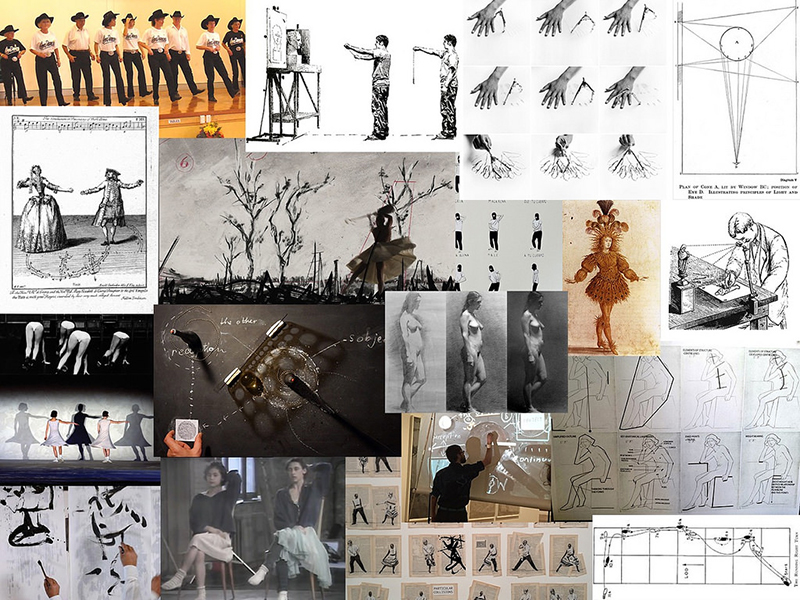
When the digital screen feels stifling, the solution may lie in a larger, more tangible canvas. An inspiration board (or mood board) invites you to explore a design’s intended look and feel through different color schemes, fonts, and layouts on a larger scale. The hands-on nature of creating these boards also adds a tactile dimension of arranging things to design work, which designers often find beneficial. For inspiration board ideas and example boards, head over to Pinterest or Really Good Designs.
9. Notice architectural features
Architecture and web design share a strong kinship. Architects strive to construct physical spaces that marry aesthetics and function, and web designers aim for the same in the digital world. By exploring diverse architectural styles, you can approach your projects from different perspectives. The geometric forms and patterns prevalent in buildings can trigger inspiration for a tech logo, or the stark right angles in contemporary architecture could inform the design of a minimalist website.
10. Browse the internet
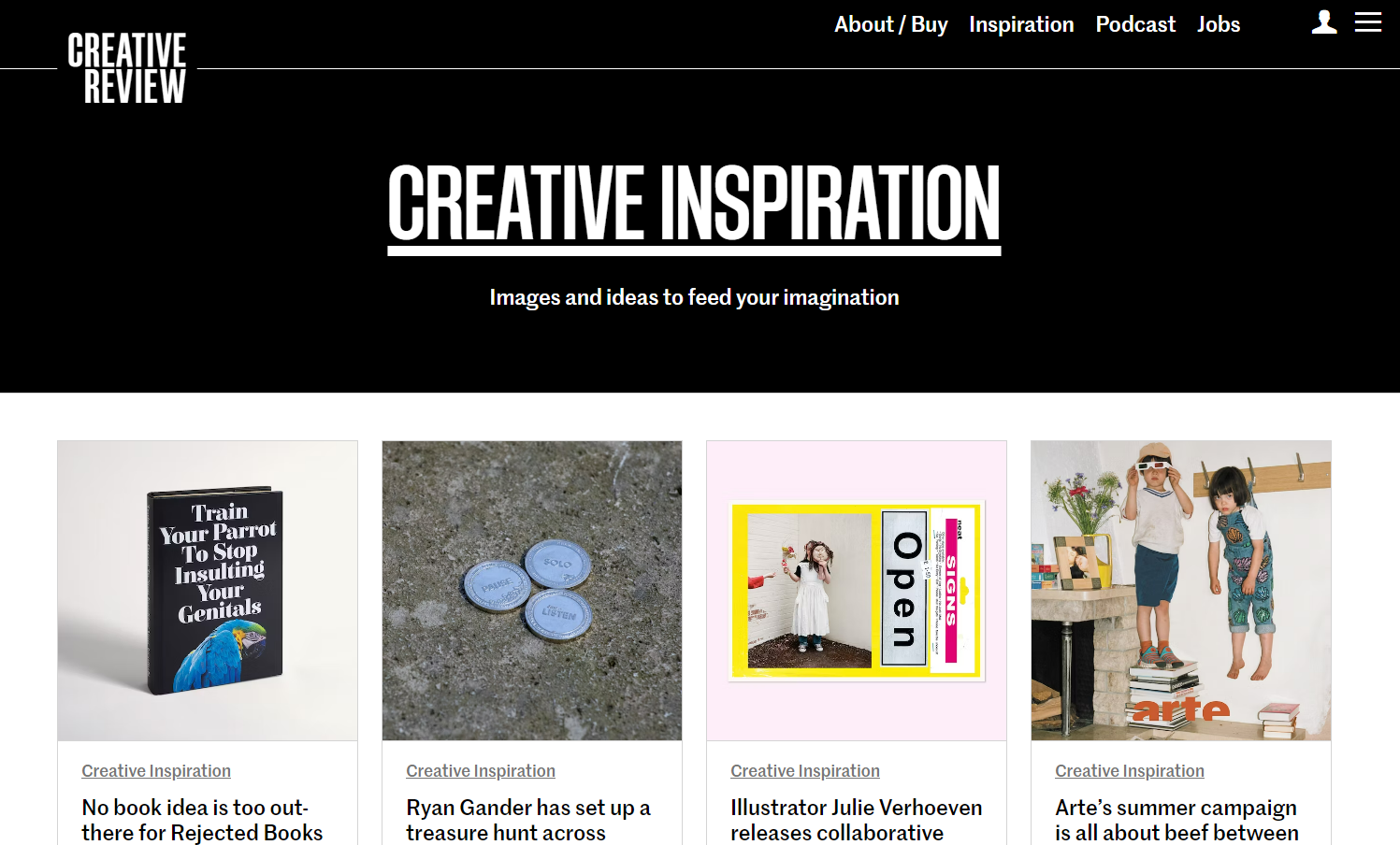
The internet is such an expansive resource for designers that the problem isn’t a shortage of ideas — it’s navigating this abundance. Focusing on only a few high-quality websites can help manage this flood of ideas. The following are reliable online sources ideal for web design inspiration:
- Graphic design blogs select and curate high-quality work, as well as help visitors keep up with current design trends
- Accolade websites like Awwwards present case studies of top-notch design work and are usually searchable by category or keyword
- Social media platforms like Pinterest and Tumblr
- Design showcases like Dribbble, Behance, and Made in Webflow
- Templates made by experienced web designers
- Design podcasts and interviews with designers
Bookmark these sites for when you need a swift pathway to inspiration.
Turn your design ideas into reality with Webflow
Want even more inspiration? Check out our Webflow Inspo email newsletter for creative inspiration delivered to your inbox every week. And discover inspiring websites built by the Webflow community in our Made in Webflow showcase.
After laying the groundwork and finding inspiration, the technical side of design begins. The journey between inspiration and execution can be rocky sometimes, but Webflow’s drag-and-drop website builder smooths that path by eliminating the need to write code.
Finally, if your web design skills are undeveloped or rusty, head over to Webflow University. Whether you’re a beginner or an expert designer getting to know our platform, these tutorials will help you showcase your best designs to the world.


